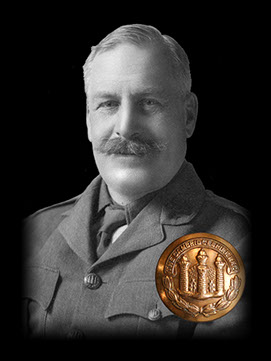
Who Were
The Cambs
The Cambs
at War
1/1st Btn 1914-1919
1914 - 1/1st Overview
1915 - 1/1st Overview
1915 - St Eloi
1915 - Fosse Wood
1916 - 1/1st Overview
1916 - The Schwaben
1916 - St Pierre Divion
1917 - 1/1st Overview
1917 - St Julien
Insignia, Medals & Books
Remembering The Cambs
Biographies
About Us &
This Site
1914
August
On the night of the 4th August 1914 the men of the Cambs were going about their usual daily lives. It must have been a strange two days since returning from annual camp and all the men were well aware of the ultimatum the British Government had given the Germans and the growing likelihood of war.
Telegrams were sent out to the Coys and various village detachments around 9pm calling for all the men to report to their Drill Halls. A system of messengers and runners sprang into action to get word out to the more rural Cambs men. Detachments from the various village Drill Stations gathered and set off to their Coy Drill Halls. The ultimatum given to the Germans expired at 11pm and from that moment Britain was at war. By midnight most Cambs men had reported in. After what must have been an anxious sleepless night the morning of the 5th saw a hive of activity as equipment was issued and checked. The mobilization orders called for all the Coys to head to Cambridge by train.
Word got out around most of the Fenland Coys' home towns that the men were leaving and large crowds gathered to see them off, except in Ely where it seems no one was told. The rail stations became a mass of families, friends, and well wishers. There were speeches, bands played and everyone sang. At Ely, despite the fact word had failed to reach most of people and the town band, many residents of Silver Street where the Drill Hall was located came out to see them off as did people all along the route to the station. At the station a large group of reservists from across the county were waiting for trains, like the Cambs men they had just received their mobilisation orders. The station soon burst to life with singing and cheers. At 1pm the train, which had already picked up the other Fenland Coys, arrived and the men left for Cambridge.
The men of the Cambridge Coys after reporting to the Drill Hall were then billeted at various schools around the city, the Fenland Coys joined them when they got to Cambridge. The next few days were busy with kit inspections and medical exams. Numerous old Cambs TF men who had left the Battalion in the previous year returned and any spaces due to men being medically unfit were quickly filled. The Battalion left Cambridge at in the early morning of Saturday 8th August by train and headed for Romford.
The Battalion stayed at Romford for a week and once the entire Brigade had assembled there they set off for a three day march to Long Melford. After a stay at Long Melford for eight days the Battalion set off once again. After a further march the Coys were spread out at various locations including Ipswich and Bury St Edmunds. They were used to guard various key transport locations and coastal areas as well as defence construction.
September
The 1st September saw the Battalion become the 1st Imperial Service Battalion, The Cambridgeshire Regiment. It was now to be made up entirely of those who had volunteered for overseas service. Any men who had not volunteered or were medically unfit were detached and moved to take over various guard duties. The change to Imperial Service Battalion also meant the loss of the Battalions pre-war CO when Lt Col Louis Tebbutt was found to be medically unfit for active service, he was replaced by Maj Copeman. Early September also saw the whole Battalion move to Stowlangtoft Hall, just east of Bury St Edmunds.
October
The Cambs time at Stowlangtoft Hall was mostly spent undergoing a rigorous training scheme aimed at preparing them for overseas service. It was also a period of great frustration as for much of the time the Battalion was kept on a one hour emergency warning standing. This meant they had to be ready to move at all times in case of invasion or emergency, false alarms were frequent and caused a constant interruption to training and leave.
November
On the 6th November the 1st Battalion, The Hertfordshire Regiment TF left the Brigade and headed over to France. It was made clear to all the Cambs that they were probably going to be the next to go, training was stepped up and every effort was made to get the men ready. In mid November the Battalion left Stowlangtoft Hall and took the 1st Herts place in Bury St Edmunds.
December
During the first two weeks in December the men took part in several large training attacks in addition to the usual training program. A large contingent of men was also sent to Beccles for trench digging for a week. The men were not given Christmas leave and Christmas Day was spent at Bury St Edmunds. Each man in the Battalion was given a scarf and card as a gift from the ladies of Cambridge. They were also each given an ounce of tobacco from the people of Bury St Edmunds. In the evening a concert party was held at the Corn Exchange that included dancing till 3am.
In late December the Army Council reiterated the TF rules regarding underage soldiers. While men could join the TF from 17 they were not permitted to serve overseas until they were 19. UK based battalions could have boys aged 14-17 on strength as buglers or bandsmen but only with the consent of their parents and in very limited numbers. While these order were clear the Cambs, like many other battalions, did contain men under 19. Most of these had attested with a false date of birth although their real ages would have been well known by the other men and community alike.
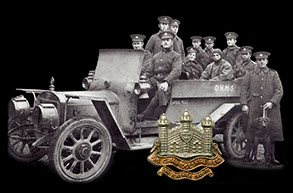
Cambs men and their armoured car.
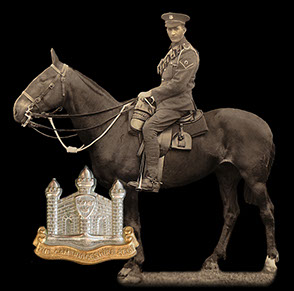
Farrier L/Cpl on horse.
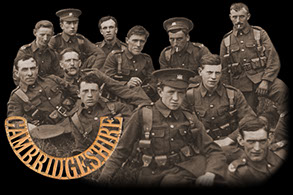
Cambs men take a break during a march.
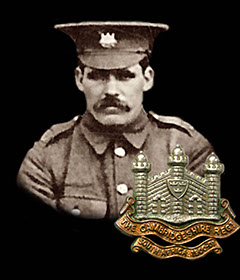
Cpl Arthur Rawson, from Whittlesey.

This site went live on the 14th February 2015 to mark 100 years since the 1/1st Cambs went off to war.
WE WILL REMEMBER THEM
Email us: cambsregt@gmail.com
Copyright 2015, 2016, 2017, 2018, 2019 by Felix Jackson. The information and images on this site should not be reproduced without prior permission.
